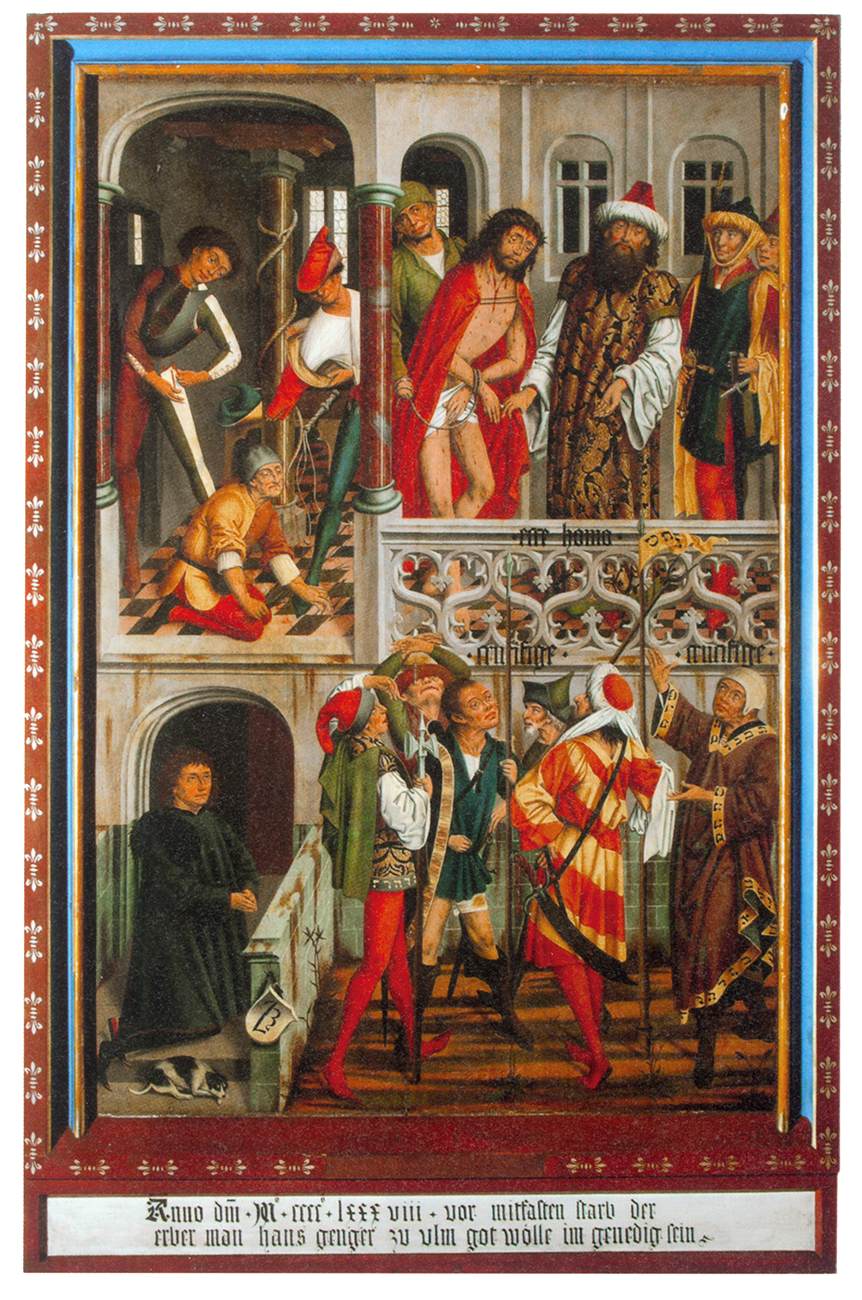Description
The painting Epitaph for Hans Genger by the German artist Friedrich Herlin is a masterpiece of late Gothic art. The piece, with an original size of 172 x 114 cm, was created in the 15th century and is currently in the collection of the Germanic National Museum in Nuremberg.
The composition of the painting is a stunning example of Herlin's ability to create a dramatic and emotional scene. At the center of the work is the deceased, Hans Genger, surrounded by saints and angels who accompany him on his journey to the afterlife. The figure of Genger, dressed in a white robe and a laurel wreath, is rendered in great detail and lifelikeness, suggesting that Herlin drew inspiration from classical sculpture for this work.
The coloring of the painting is also remarkable, with a rich and vibrant palette that includes intense shades of blue, red, yellow, and green. Ornate details, such as the gold embroidery on Genger's robes and the embellishments on the saints' vestments, are also impressive, reflecting the wealth and power of the time.
The history of the painting is equally fascinating. It is known that it was commissioned by the family of Hans Genger, a wealthy cloth merchant from Nördlingen. The work was originally placed in the family's funerary chapel in St. George's Church in Nördlingen, where it was kept for centuries before being transferred to the Germanic National Museum in Nuremberg.
A little-known aspect of painting is that, originally, it had a practical function as well as an aesthetic one. The work was designed as an epitaph, that is, a commemorative plaque that was placed on the grave of a deceased person. The image of Genger and his accompanying saints was seen as a way to ensure his entrance into heaven and to remind those who visited his grave of his life and achievements.
In short, the Epitaph for Hans Genger painting is an impressive piece of work that combines exceptional artistic skills with rich history and cultural significance. Its dramatic composition, vibrant coloring and ornate details make it a masterpiece of late Gothic art and a valuable piece of German artistic heritage.

